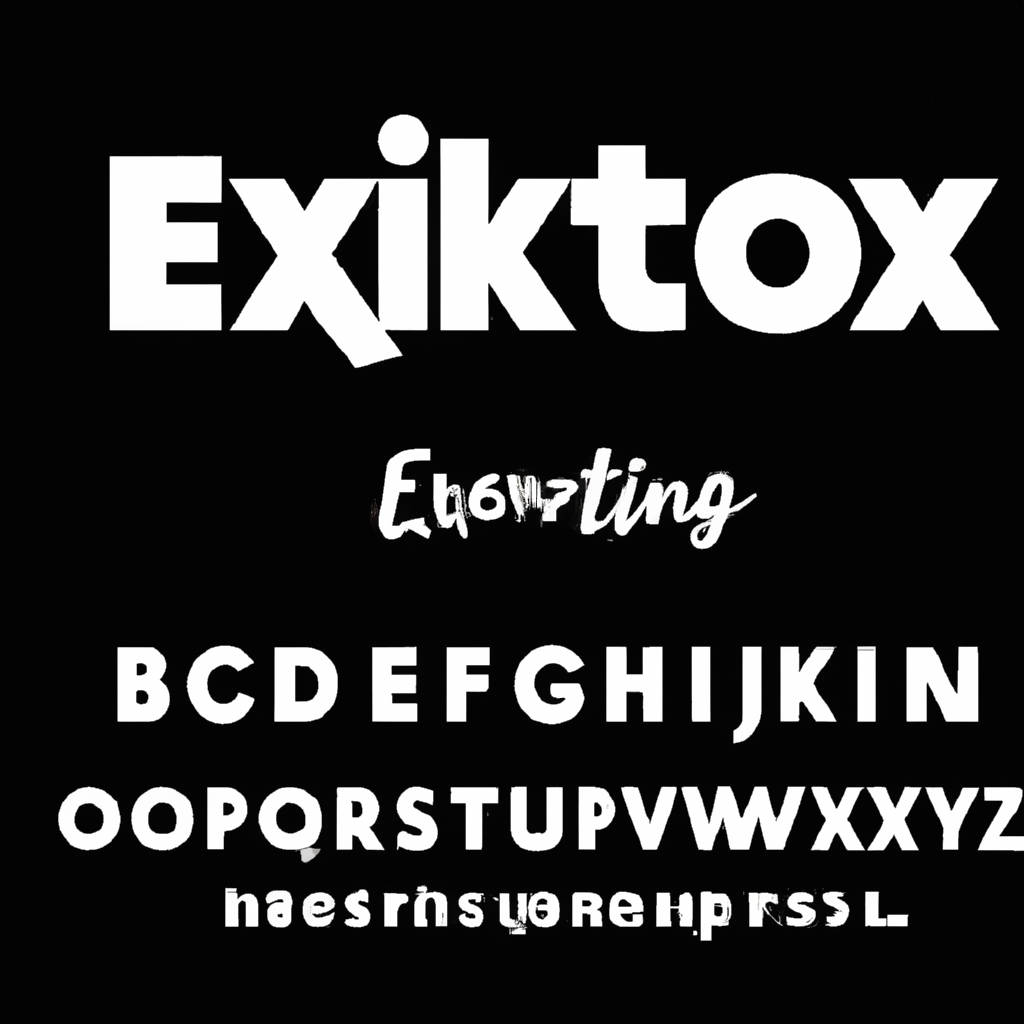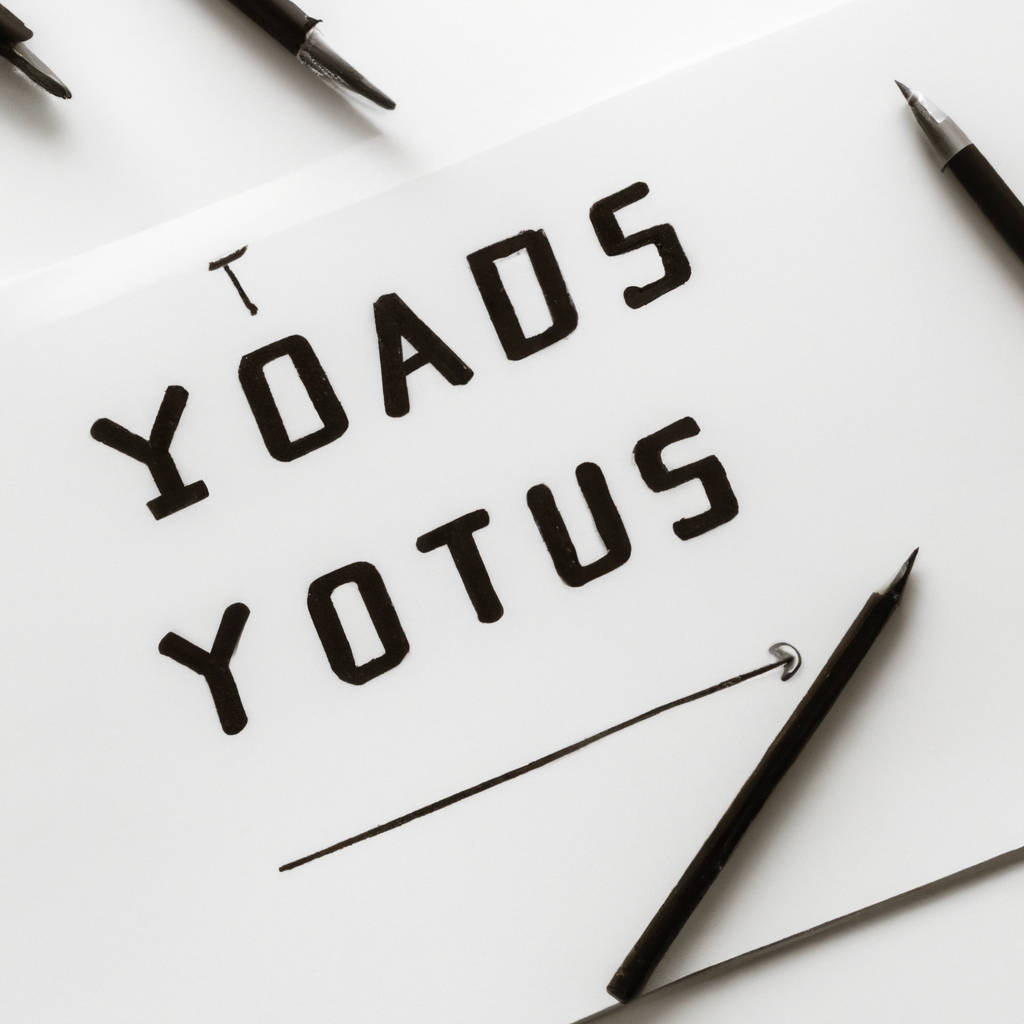Exploring Font Creation: Understanding the Basics
Exploring font creation is a fascinating world that allows individuals to express their creativity and imagination through the design of unique and personalized fonts. Understanding the basics of font creation is essential for anyone looking to delve into this art form.
Fonts are essentially a set of characters with a specific style and design that can be used to display text in a visually appealing way. The process of creating a font involves designing individual letters, numbers, and symbols that come together to form a cohesive and harmonious typeface. This can be done through various software programs that allow designers to manipulate different aspects of the font, such as size, spacing, and style.
By mastering these basic elements of font creation, individuals can unlock a world of possibilities and create fonts that are truly one-of-a-kind. Fonts play a crucial role in shaping the visual identity of a brand or piece of content, making it essential for designers to have a solid understanding of how fonts work and how to create them effectively. Ultimately, exploring font creation can be a rewarding and fulfilling experience for anyone with a passion for design and typography.

Getting Started: Tools and Software for Font Design
When it comes to getting started with font design, having the right tools and software is essential. One of the most popular programs used by designers is Adobe Illustrator, which offers a wide range of tools for creating and manipulating fonts.
Another popular choice is Glyphs, a specialized font design software that allows for precise control over every aspect of a font. For those on a budget, there are also free options available such as FontForge and BirdFont. These programs may not have all the bells and whistles of their paid counterparts, but they are still powerful tools for creating unique and professional-looking fonts. In addition to software, designers will also need access to a variety of other tools such as a graphics tablet, which can make it easier to create hand-drawn fonts, and a scanner for digitizing sketches and other artwork.
It’s also important to have a good understanding of typography principles and design basics, as these will help guide the design process and ensure that the final font is both visually appealing and functional. By investing in the right tools and software and taking the time to learn the fundamentals of font design, designers can create fonts that stand out and make a lasting impression.
Sketching Your Ideas: Planning and Drafting Your Font
When it comes to designing a font, sketching your ideas is a crucial first step in the planning and drafting process. By putting your ideas down on paper, you can visually explore different shapes, sizes, and styles for each letter. Sketching allows you to experiment with different design elements, such as serifs, terminals, and counter spaces, before committing to a final design. It also helps you to see how each letter interacts with the others and how the overall font will look when used in various contexts. By sketching your ideas, you can quickly iterate on different concepts and refine your design until you are satisfied with the result.
In the planning stage, it is important to consider the overall aesthetic and functionality of your font. Are you aiming for a modern, minimalist look, or a more ornate and decorative style? Will your font be used for body text, display purposes, or both?
These are important questions to consider as they will influence the design decisions you make during the drafting process. Additionally, you should think about the target audience for your font and how it will be used. For example, a font designed for children’s books may need to be more whimsical and playful, while a font for a corporate annual report may need to be more professional and formal.
Once you have sketched out your ideas and solidified your plan, it is time to start drafting your font digitally. Using font design software, you can turn your hand-drawn sketches into digital outlines that can be refined and adjusted with precision.
This stage of the process allows you to fine-tune the details of your font, such as adjusting the spacing between letters, refining the curves and angles of each glyph, and ensuring consistency across the entire character set. By combining the creativity of sketching with the precision of digital drafting, you can create a unique and well-crafted font that effectively communicates your intended message.

Digitizing Your Design: Converting Handwritten Fonts into Digital Format
Digitizing your design by converting handwritten fonts into a digital format can be a great way to bring a unique and personal touch to your projects. By taking your handwritten notes or drawings and turning them into a digital file, you can easily incorporate them into various design projects such as logos, invitations, or social media graphics. This process allows you to preserve the original charm and character of your handwriting, while also making it easier to edit, resize, and manipulate your design elements. Additionally, digitizing your handwritten fonts can help streamline your workflow and save you time and effort in the long run.
There are several methods you can use to digitize your handwritten fonts. One common approach is to scan your handwritten notes or drawings using a high-quality scanner and then use software programs like Adobe Illustrator or Photoshop to convert them into a digital format. These programs offer tools that allow you to trace and refine your handwritten fonts, ensuring that they look polished and professional once they are digitized.
Another option is to use specialized apps or websites designed specifically for converting handwritten fonts into digital format. These tools often have features that make the digitization process quick and easy, such as automatic tracing and editing tools. Some apps even allow you to create custom fonts based on your handwriting, giving you the flexibility to use your unique style across various design projects.
Overall, digitizing your design by converting handwritten fonts into a digital format can be a fun and creative way to add a personal touch to your projects. Whether you’re a designer looking to incorporate your own handwriting into your work or simply want to preserve a special note or drawing in a digital form, digitizing your handwritten fonts can help you bring your ideas to life in a digital world.
Refining Your Typeface: Editing and Fine-Tuning Your Font
Refining your typeface is essential in creating a polished and professional-looking font. Editing and fine-tuning your font involves making subtle adjustments to improve readability, consistency, and aesthetic appeal. One of the first steps in refining your typeface is to ensure that all characters are consistent in size and spacing.
This involves adjusting the kerning, leading, and tracking to create balanced and harmonious text. Additionally, refining your typeface includes making sure that the font is legible at various sizes and weights. This may involve adjusting the stroke width, contrast, and x-height to improve readability. It is also important to consider the overall design and style of your font, making sure that it aligns with the intended purpose and audience.
Fine-tuning your font may involve tweaking individual characters, adjusting curves and angles, and refining the overall visual appearance. Paying attention to detail and making thoughtful adjustments can greatly improve the overall quality of your typeface. With the right tools and techniques, you can create a font that is both visually appealing and functional.
By taking the time to edit and refine your typeface, you can ensure that your font stands out and effectively communicates your message. Ultimately, refining your typeface is a creative and iterative process that requires patience and attention to detail. By carefully editing and fine-tuning your font, you can create a professional and polished design that will make a lasting impression.

Testing Your Font: Assessing Readability and Compatibility
When it comes to testing your font, it is important to assess its readability and compatibility across different platforms and devices. Readability is crucial as it determines how easily users can read and understand the text. Factors such as font size, spacing, and contrast play a significant role in enhancing readability. Compatibility, on the other hand, refers to how well the font displays on various devices and browsers. It is essential to test your font on different screen sizes and resolutions to ensure that it appears as intended.
One way to assess readability is to conduct user testing. This involves asking a group of individuals to read text displayed in your font and provide feedback on its legibility and comprehension. It is also helpful to use tools such as readability calculators to determine the reading level required to understand the text. Additionally, conducting a legibility test, such as the Flesch-Kincaid readability test, can provide valuable insights into how easy it is for readers to process the information.
In terms of compatibility, it is important to test your font on various devices, including desktops, laptops, tablets, and smartphones. Different operating systems and browsers can render fonts differently, so it is crucial to check how your font appears across different platforms. Using tools like BrowserStack can help you simulate how your font will look on different devices and browsers, allowing you to make any necessary adjustments to ensure compatibility.
Overall, testing your font for readability and compatibility is essential to ensure that your text is easily readable and accessible to all users. By conducting user testing, using readability calculators, and checking compatibility across different devices, you can ensure that your font meets the needs of your audience and enhances the overall user experience.
Finalizing Your Creation: Exporting and Sharing Your Custom Font
Once you have put in the time and effort to create your custom font, the next step is finalizing your creation by exporting and sharing it. Exporting your font file is essential in order to use it in various design projects or share it with others. There are different file formats that you can export your font in, such as TrueType or OpenType, depending on your needs and preferences.
Make sure to test your font before exporting it to ensure that all characters are displaying correctly and there are no errors. Once you have finalized your font, you can share it with others by uploading it to font-sharing websites or platforms where other designers can discover and download it. Sharing your custom font can be a great way to showcase your work and potentially collaborate with other creatives in the design community.
Additionally, you can also consider selling your font on online marketplaces or through your own website to monetize your creation and reach a wider audience. Remember to include proper licensing information when sharing or selling your font to protect your intellectual property rights and clarify how others can use your creation. By following these steps and taking the necessary precautions, you can successfully export and share your custom font with the world.

Conclusion and Final Thoughts
In conclusion, it is important to consider the consequences of our actions and decisions. When faced with difficult choices, it is crucial to think about the potential impact on ourselves and others. It is essential to strive for fairness and justice in all aspects of our lives, and to always act with integrity and honesty.
While it may be tempting to take shortcuts or make decisions that benefit us in the short term, we must remember that our actions have ripple effects that can impact others in ways we may not anticipate. By taking the time to consider the broader implications of our choices, we can work towards creating a more just and equitable society for all.
In our final thoughts, we must remember that our actions matter, and that we have the power to make a positive impact on the world around us. Let us strive to always do what is right, even when it is difficult, and to act with compassion and empathy towards others. By doing so, we can contribute to a more harmonious and just society for all.
